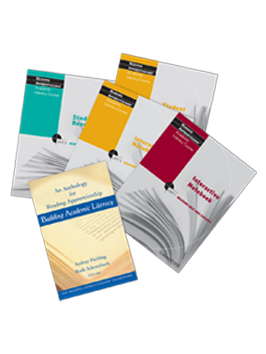CURRICULUM UPDATE UNDERWAY: 2024-2027
WestEd is working on a full update of the Reading Apprenticeship Academic Literacy (RAAL) curriculum, supported by a 2024-2028 EIR grant. This grant project includes designing, piloting, and evaluating the effectiveness of RAAL with 8th and 9th graders in multiple states.
The current RAAL curriculum (2003) will only be available to existing clients during this update period. We will share updates and announcements on our website and WestEd.org as soon as the updated Academic Literacy curriculum becomes available. Contact Diane Lee [email protected] if you need assistance with your order.
Interested in getting the updated curriculum and professional learning at no cost? See if your school is eligible to participate in the 8th and 9th grade EIR grant-supported research (2025-2027). Please visit the study page.
Ready to get started but can’t wait for the RAAL materials? Consider these options:
- Participate in Reading Apprenticeship professional learning
- Read our book
- Explore free curriculum resources created by teachers

